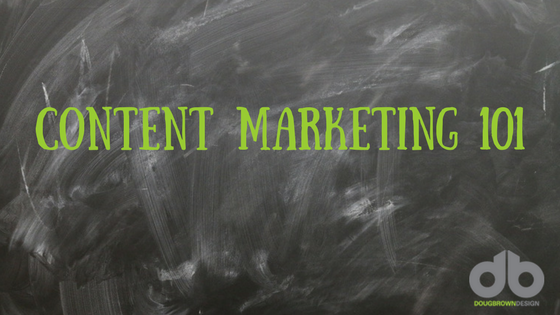Content Marketing isn’t a new marketing principle; nor is it a fad or trend. Many would say it’s the future of marketing. However, there still seems to be confusion around exactly what it is and what it isn’t. And surprisingly, some of the biggest brands in the world still don’t understand it or how to implement it.
Content Marketing Institute (CMI) defines content marketing as, “a strategic marketing approach focused on creating and distributing valuable, relevant, and consistent content to attract and retain a clearly defined audience — and, ultimately, to drive profitable customer action.”
To add to this definition, consider content marketing as a means to answer questions, provide solutions to challenges and educate an audience. Content marketing isn’t focused on your products or services. It’s focused on providing valuable information in an industry. It’s the Why not the What.
Here’s an example:
A company manufactures quartz countertops. They launch a new product that looks like concrete countertops but is actually quartz. They write a blog comparing concrete countertops and quartz countertops. The blog provides information about the pros and cons of each, with the conclusion that concrete countertops, although very appealing, have drawbacks.
Content marketing is NOT advertising. Advertising in print, broadcast or online is a part of traditional, outbound marketing. The audience isn’t clearly defined; it is somewhat so online because advertising can be placed on specific websites. But it’s not solution-centered. It’s product or brand-centered.
Advertising and content marketing can be integrated. Digital ads can promote content pieces like ebooks and whitepapers. Another way to integrate content marketing and paid advertising is to create content focused on a particular concept without mentioning the name of the product or service while also supporting this idea with product promotion.
Here’s an example:
A company manufactures large windows. They have a specific branded window that allows for large views with little obstruction. They write a blog about the concept of expansive glass windows. It talks about the features and benefits of its product but never uses its name. At the same time, the company runs digital ads about the actual product.
One of the most important parts of content marketing, like any kind of marketing, is the strategy. If focusing on a product or service, what are the questions around it? What type of unique solution does it provide? How is it relevant to the audience? How does it move a user down the funnel? Content marketing shouldn’t be random; it needs to be targeted if it is successfully going to convert.
An ideal funnel may look like this:
- Content is published and promoted on multiple channels, including social media.
- User is “attracted” to the content because it addresses a problem.
- User reads the blog.
- User reacts to the blog’s CTA (call to action). The CTA prompts the user to browse the solutions that the company has related to the problem addressed.
- User browses through solutions and takes a further action to either purchase a product (applicable for ecommerce) or signs up for a demo, webinar or other event.
This is ideal. It won’t always work this way. It may take a user reading and interacting with content over a span of time before actually converting. But you are building trust and credibility, attributes that ever brand wants.
Content marketing won’t increase your revenue overnight. But it can be much more effective and less expensive than traditional marketing. It also builds the relationship between user and brand. Without great content, it’s almost impossible to execute other areas of inbound marketing like social media marketing and SEO (search engine optimization).
So now that we’ve provided you a full education on content marketing, be prepared for our CTA. We’d love to help you establish a content marketing plan. Get in touch today.


